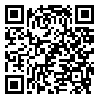Volume 9, Issue 3 (7-2024)
CJHR 2024, 9(3): 127-134 |
Back to browse issues page
Download citation:
BibTeX | RIS | EndNote | Medlars | ProCite | Reference Manager | RefWorks
Send citation to:



BibTeX | RIS | EndNote | Medlars | ProCite | Reference Manager | RefWorks
Send citation to:
Delam H, Keshtkaran Z, Bargrizaneh F, Moghaddam S, Safari H, Sookhak F. Changing Patterns in Internet Addiction Among Students: Before and During COVID-19 Pandemic. CJHR 2024; 9 (3) :127-134
URL: http://cjhr.gums.ac.ir/article-1-375-en.html
URL: http://cjhr.gums.ac.ir/article-1-375-en.html
Hamed Delam1 
 , Zahra Keshtkaran2
, Zahra Keshtkaran2 
 , Farshad Bargrizaneh1
, Farshad Bargrizaneh1 
 , Sara Moghaddam3
, Sara Moghaddam3 
 , Hamed Safari1
, Hamed Safari1 
 , Fatemeh Sookhak *4
, Fatemeh Sookhak *4 



 , Zahra Keshtkaran2
, Zahra Keshtkaran2 
 , Farshad Bargrizaneh1
, Farshad Bargrizaneh1 
 , Sara Moghaddam3
, Sara Moghaddam3 
 , Hamed Safari1
, Hamed Safari1 
 , Fatemeh Sookhak *4
, Fatemeh Sookhak *4 


1- Student Research Committee, Larestan University of Medical Sciences, Larestan, Iran.
2- Department of Nursing, School of Nursing and Midwifery, Community Based Psychiatric Care Research Center, Shiraz University of Medical Sciences, Shiraz, Iran.
3- Department of Nursing, Faculty of Nursing, Jahrom University of Medical Sciences, Jahrom, Iran.
4- Department of Nursing, School of Nursing, Larestan University of Medical Sciences, Larestan, Iran. ,Fatemeh.sookhak@gmail.com
2- Department of Nursing, School of Nursing and Midwifery, Community Based Psychiatric Care Research Center, Shiraz University of Medical Sciences, Shiraz, Iran.
3- Department of Nursing, Faculty of Nursing, Jahrom University of Medical Sciences, Jahrom, Iran.
4- Department of Nursing, School of Nursing, Larestan University of Medical Sciences, Larestan, Iran. ,
Abstract: (866 Views)
Background: In recent years, with the rapid expansion of Internet use, Internet addiction has increased. Internet addiction will be considered as a disorder worldwide in the near future and it is very important to prevent it from becoming an acute problem in the new era.
Objectives: The current study was planned to assess changes in the state of internet addiction, before and during the COVID-19 pandemic in 2021.
Materials & Methods: The current cross-sectional study was done on university students (Medical Sciences and Islamic Azad) in southern Iran in October 2021. Standard Kimberly Young questionnaire was used to measure the status of internet addiction. A total of 379 students was selected through convenience sampling method. The link to the online questionnaire was provided to the study participants through the official educational programs, websites and official social networks of the universities. Paired t-tests, chi-square and ANOVA were used for analysis. Logistic regression model was used to measure predictive variables.
Results: More than 65% of the people were women and 83.6% were single. Analysis of the standard internet addiction questionnaire showed that the average score of Internet addiction had increased from 34.44±14.10 to 48.47±17.72, which was significant (P<0.001). The duration of Internet use was also increased from 1.87±0.63 per day to 3.95±1.71 hours per day, which was significant (P<0.001).
Conclusion: In general, it seems that the level of internet addiction among students has increased during COVID-19. Therefore, immediate public awareness measures are needed to monitor internet consumption. Since students are at risk of Internet addiction, early identification and implementation of preventive and control programs are suggested for this group.
Objectives: The current study was planned to assess changes in the state of internet addiction, before and during the COVID-19 pandemic in 2021.
Materials & Methods: The current cross-sectional study was done on university students (Medical Sciences and Islamic Azad) in southern Iran in October 2021. Standard Kimberly Young questionnaire was used to measure the status of internet addiction. A total of 379 students was selected through convenience sampling method. The link to the online questionnaire was provided to the study participants through the official educational programs, websites and official social networks of the universities. Paired t-tests, chi-square and ANOVA were used for analysis. Logistic regression model was used to measure predictive variables.
Results: More than 65% of the people were women and 83.6% were single. Analysis of the standard internet addiction questionnaire showed that the average score of Internet addiction had increased from 34.44±14.10 to 48.47±17.72, which was significant (P<0.001). The duration of Internet use was also increased from 1.87±0.63 per day to 3.95±1.71 hours per day, which was significant (P<0.001).
Conclusion: In general, it seems that the level of internet addiction among students has increased during COVID-19. Therefore, immediate public awareness measures are needed to monitor internet consumption. Since students are at risk of Internet addiction, early identification and implementation of preventive and control programs are suggested for this group.
Article Type: Original Contributions |
Subject:
Public Health
Received: 2024/04/9 | Accepted: 2024/05/27 | Published: 2024/07/1
Received: 2024/04/9 | Accepted: 2024/05/27 | Published: 2024/07/1
Send email to the article author
| Rights and permissions | |
 |
This work is licensed under a Creative Commons Attribution-NonCommercial 4.0 International License. |






